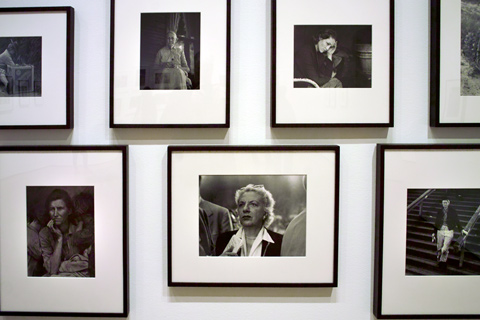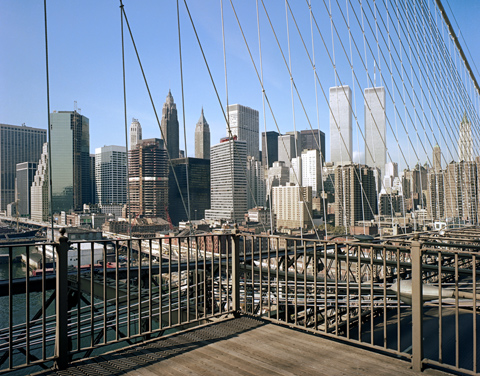
Dorothea Lange photographs, the Museum of Modern Art — © Brian Rose
I’ve been reading Through the Lens of the City, NEA Photography Surveys of the 1970s by Mark Rice. A few comments mid-stream.
The NEA survey grants were an outgrowth of a proposal championed by Walter Mondale to commemorate the U.S. bicentennial by commissioning photographers to create a visual documentation of America along the lines of the work done by the FSA in the 1930s. That initiative died of politics, but the National Endowment for the Arts picked up the ball themselves and established the survey program that ran for several years.
In all of this, there were lots of arguments about what kind of documentary photography was desired. The work done by Walker Evans and Dorothea Lange–and many others–were recognized as the paradigm, but perhaps for the wrong reasons, or as the result of misunderstandings. Lange produced iconic images that sought to ennoble the poor farmers she photographed. And Evans was attracted to the humble vernacular structures of the south. His intellectual clarity transcended the nostalgic nature of the subject matter, and his evenhanded visual discipline provided a way to show places, things, and people which would otherwise remain invisible. Both Lange and Evans–as different from each other as they were–defined a new hybrid kind of photography that was both document and art.
The America the FSA photographers presented was a narrow view of society, intentionally of course, as part of the mandate of the Farm Security Administration. What the bicentennial project envisioned was something more ambitious, but nevertheless rooted in the FSA style of documentation, and preferably directed by someone with the strong vision of the FSA’s Roy Stryker. When the NEA took over the idea, they set up a more diverse and geographically dispersed structure. Hence there were survey projects scattered all over the United States, and unlike the rural based FSA photography, most were focused on urban areas.

From the Brooklyn Bridge, 1981 (4×5 film) — © Brian Rose/Ed Fausty
By the time I was asked to participate in the Lower Manhattan project, the survey program had just about run its course. I had just completed photographing the Lower East Side with collaborator Ed Fausty, so naturally I–we–jumped at the chance to extend the project further. I don’t think we ever had a sense of what the bigger context was, that this was one of dozens of similar survey projects in other communities. In the end, ours was a failed project. There was no book or catalog, only an exhibition in Federal Hall on Wall Street that was not critically reviewed. As far as I know none of the work was placed in an archive for future research or perusal.
The work Ed and I did together or separately ended it up in boxes. It’s clear, however, in putting together the series of images for WTC, my book about the World Trade Center, that we were onto something.
Great projects Brian. Although I ended up accidentally on your blog, for which I am Google search very grateful, I like it. BUT I am surprised to read that your Manhatten project for the NEA did not get much attention. Why do you think that is?
I would like to know more about that whole project in fact. For example, do you have any idea who else was involved in picturing New York for the NEA?
Sorry for all these questions.
Thanks again, Wes